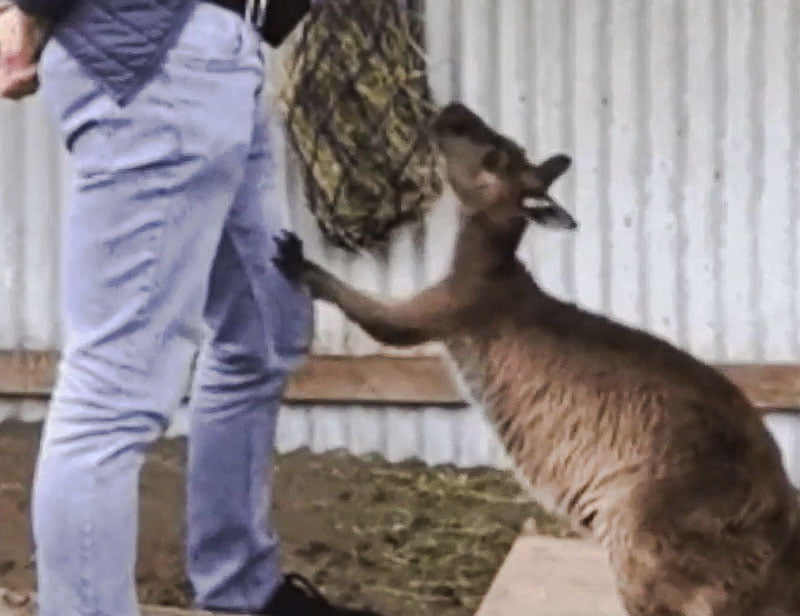
The video explains it all to be honest but I’ll add some words and comments – note: I’ve concluded that this research is rather pointless for this reason. These captive kangaroos are in effect domesticated and the research is proving is that domesticated animals communicate with their human caretakers. This we already know and therefore the research adds nothing, it seems to me, to the sum of human knowledge.
As you can see in the video, this wild but captive kangaroo (female) looks up at the researcher and asks if he would help them open the box in which there is food. They were allowed access to the food and then it was placed in the box or it was covered so they no longer had access which prompted the kangaroo to ask for help. The study was asking whether wild animals can communicate with people and this confirms that they do.
In this instance the kangaroo that you see in the video employs an intense gaze plus even touches the man’s leg to emphasise the request. It looks very much like a domestic cat or dog and how they make a demand upon their human caretakers. We see it all the time so it is quite charming to see this kangaroo do it.
The kangaroos in the study were wild yet captive. The co-author of the study Dr Alexandra Green, a post-doctoral researcher at the Sydney School of Veterinary Science at the University of Sydney, said that their gaze was “pretty intense”. She also said that, “We’ve previously thought only domesticated animals try to ask for help with a problem, but kangaroos do it too. If they can’t open the box, they look at the human and back to the container.”
Some of the kangaroos nudged their humans with their nose to emphasis their request their help. Apparently there have been a limited number of studies of non-domesticated animals communicating with people.
The studies took place at three Australian sanctuaries in the state of New South Wales: Wild Life Sydney Zoo, Kangaroo Protection Cooperative and Australian Reptile Park on the Central Coast.
The kangaroos being captive were habituated to the presence of people. Sixteen kangaroos were tested in their enclosures between 7 AM and 6 PM during November 2019 for 8 days. There were three males and 13 females.
I wonder whether as these kangaroos are habituated to humans because they are captive animals that they are more inclined to communicate with people and if the same test was carried out on truly wild kangaroos whether they would employ the same intense gaze and techniques to get the attention of humans.
It doesn’t surprise me that much to be honest because interspecies relationships are created quite instinctively and naturally. There are many instances of interspecies relationships beyond the human-animal one. It is an example really of how animals are more sentient (if one can use that phrase) then people often think. They simply don’t know human language which creates a barrier. Imagine what it would be like if they could speak English or Australian! Yes, I know that it is the same language but if they could speak human language humans would respect animals a lot more because the ignorant humans amongst us would suddenly realise that they are more intelligent, aware and sensitive towards what is going on than they once believed.
The researchers believe that their work indicates that intentional communication towards humans by animals has been underestimated. I believe that the man in the video is: Dr Alan McElligott from the University of Roehampton (and now based at City University of Hong Kong).
Backup vide
If the above video stops working please try this one:

